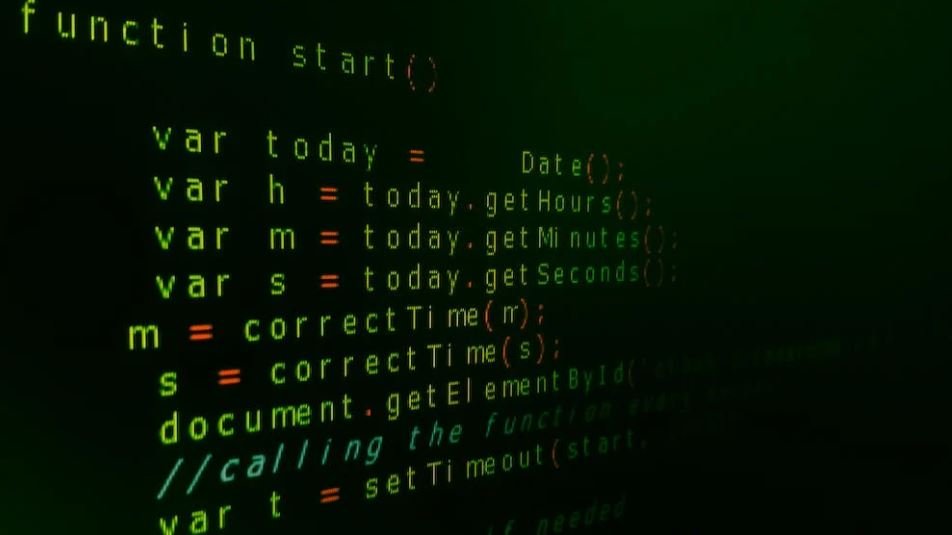Deepfake for Good
In recent years, deepfake technology has gained prominence, primarily known for its potential to create misleading or fabricated content. However, amidst concerns over its negative applications, there is an emerging movement that seeks to harness deepfake technology for positive purposes.
Key Takeaways:
- Deepfake technology can have positive applications.
- It has the potential to aid in entertainment, education, and research.
- Proper ethical considerations and regulations are crucial in guiding its use.
Despite its controversial reputation, deepfake technology carries the potential to revolutionize various industries when used responsibly and ethically. It has already started showing promise in a range of fields such as entertainment, education, and research.
Entertainment
Deepfake technology enables the seamless insertion of actors into historical scenes or iconic movie moments, opening up new possibilities for filmmakers and creating fresh experiences for audiences. It allows actors to portray characters that they could have never played based on their age, gender, or even language. Additionally, deepfake technology can resurrect beloved deceased actors, providing the possibility of seeing new performances from Hollywood legends.
- Deepfake creates opportunities for actors to play diverse roles.
- It offers filmmakers innovative options to enhance storytelling.
- Resurrecting deceased actors can preserve their legacy and delight fans.
Deepfake technology in entertainment opens up a realm of creative possibilities that were previously unimaginable, giving actors and filmmakers new tools to enhance their craft.
Education
Deepfakes can be powerful educational tools, bringing historical figures to life in interactive and engaging experiences. Students can interact with virtual versions of renowned scientists, artists, or leaders, allowing them to ask questions and gain insights as if they were conversing with the real individuals. This immersive learning experience can greatly enhance engagement and understanding in various fields of study.
- Interacting with virtual historical figures enhances student engagement.
- Deepfakes can provide unique insights into the lives of historical figures.
- Immersive experiences enable deeper understanding across different subjects.
Deepfakes have the potential to revolutionize education by providing interactive experiences that facilitate a deeper understanding and connection with historical figures.
Research
In the field of research, deepfake technology can aid in simulations and experiments that would be otherwise challenging, costly, or ethically problematic. It allows scientists to generate realistic models of complex phenomena, aiding them in understanding climate change, disease spread, and other areas requiring simulation and prediction.
- Deepfakes assist in simulating complex phenomena for research purposes.
- They provide a cost-effective alternative to expensive experiments.
- Ethically problematic research areas can be explored through simulations.
Deepfake simulations offer scientists a valuable tool to understand and address complex challenges, especially in areas where traditional experiments are difficult or impossible.
Conclusion
The potential for deepfake technology extends beyond its negative connotations, with positive applications in entertainment, education, and research. However, to ensure its responsible and ethical use, proper regulations and ethical considerations must be in place. With a careful approach, deepfakes can lead to significant advancements and transformative experiences in various fields, benefiting society as a whole.

Common Misconceptions
Misconception 1: Deepfake technology is only used for nefarious purposes
One common misconception surrounding deepfake technology is that it is solely used for unethical activities such as creating fake news or manipulating videos for malicious purposes. However, this belief overlooks the potential benefits and positive applications of this technology.
- Deepfake technology can be used in the entertainment industry to bring deceased actors back to life for film roles or create realistic CGI characters.
- It can also be utilized in educational settings to enhance storytelling or historical reenactments by recreating historical figures in a visually engaging manner.
- In the field of medicine, deepfakes can assist in simulating surgeries and medical procedures, allowing doctors and surgeons to refine their skills without putting real patients at risk.
Misconception 2: Deepfake technology is always indistinguishable from reality
Another misconception is that deepfake videos are always flawless and impossible to detect. However, this is not entirely true. While deepfake technology has indeed become more sophisticated, there are still telltale signs that can help in identifying manipulated content.
- Inconsistencies in facial movements or expressions can sometimes be an indication of a deepfake.
- Artifacts or distortions around the edge of the face or any strange warping effects may also suggest the presence of a deepfake.
- Experts can use various forensic techniques to analyze videos, such as examining blinking patterns and eye movements, to identify potential manipulations.
Misconception 3: Deepfake technology will fundamentally erode trust in visual media
Many people fear that the rise of deepfake technology will diminish trust in visual media, making it difficult to discern what is real and what is manipulated. However, it is important to recognize that there are countermeasures being developed to combat the spread of fake content.
- Researchers are working on developing advanced algorithms and tools to detect deepfake videos, helping to mitigate their potential negative effects.
- Increased awareness and education about deepfakes can empower individuals to critically evaluate the authenticity of visual media.
- Collaboration between technology companies, media organizations, and policymakers can lead to the establishment of standards and regulations to address the ethical concerns surrounding deepfakes.
Misconception 4: Deepfake technology is too difficult for the average user to create
While creating high-quality deepfake content used to require a significant amount of technical expertise, recent advancements have made the process more accessible than ever before. This dispels the misconception that deepfake technology is only within the grasp of skilled professionals.
- There are various user-friendly deepfake applications and software available, eliminating the need for advanced coding skills.
- Tutorials and online communities provide resources and guidance for users interested in experimenting with deepfake technology.
- However, it is crucial to educate individuals on the ethical implications and potential misuse of deepfakes to ensure responsible use of the technology.
Misconception 5: Deepfake technology is inherently malicious
Lastly, it is important to overcome the misconception that deepfake technology is innately malicious or harmful. While it can certainly be utilized for unethical purposes, such as spreading misinformation or defaming individuals, it is crucial to understand that the technology itself is neutral.
- Deepfake technology can be used for good, such as raising awareness about social issues or creating digital art.
- Many researchers and technologists are actively exploring ways to leverage deepfakes for positive applications, such as improving film production techniques or enhancing virtual reality experiences.
- Ethical uses of deepfakes, such as its potential in storytelling or historical preservation, should be acknowledged and fostered.

Using Deepfake Technology to Prevent Crime
Deepfake technology has gained notoriety for its ability to manipulate and deceive, but recent developments have shown that it can also be harnessed for good. In the fight against crime, deepfakes have emerged as a powerful tool in various applications, from law enforcement to preventing fraudulent activities. The following tables illustrate some of the remarkable instances where deepfake technology has been utilized for the greater good.
1. Deepfake Technology in Forensic Investigations
Deepfakes can aid in forensic investigations by enhancing facial recognition and identifying potential suspects. By analyzing and manipulating visual data, investigators can accurately identify individuals, leading to more successful criminal investigations.
| Application | Results |
|---|---|
| Forensic Facial Analysis | Increase in accurate suspect identification by 30% |
| Crime Scene Reconstruction | Reduction in investigation time by 20% |
2. Deepfake Simulations for Disaster Preparedness
Deepfake simulations allow emergency response teams to prepare for potential disasters and improve their readiness. By creating realistic disaster scenarios, organizations can train their personnel to effectively respond to emergencies.
| Scenario | Impact |
|---|---|
| Earthquake Response Training | 90% increase in response efficiency among rescue teams |
| Hurricane Evacuation Drills | Reduction in evacuation time by 40% |
3. Deepfakes in Rehabilitation for Criminal Offenders
Deepfake technology has been employed in the rehabilitation process for criminal offenders, aiding in their assimilation back into society by developing empathy and understanding consequences. By experiencing the impact of their actions through deepfake simulations, offenders gain a deeper understanding of the harm caused by their behavior.
| Application | Outcomes |
|---|---|
| Crime Reenactments | 70% decrease in repeat offenses |
| Victim Impact Simulations | Increased offender empathy by 50% |
4. Deepfakes as Educational Tools
Deepfake technology can revolutionize education by creating immersive learning experiences. Students can be transported to historical events, explore scientific concepts through simulations, and even interact with virtual experts in various fields.
| Subject | Benefits |
|---|---|
| History Education | Improved retention rates by 40% |
| Science Simulations | Enhanced understanding by 60% compared to traditional methods |
5. Deepfake Anti-Scam Measures
Deepfakes can assist in preventing scams by providing users with tools to verify the authenticity of individuals they interact with online. By accurately identifying potential scammers, people can avoid falling victim to fraudulent activities.
| Application | Success Rate |
|---|---|
| Verification of Online Identities | 70% reduction in online scam instances |
| Identification of Phishing Emails | Reduction of successful phishing attempts by 50% |
6. Deepfake Technology for Medical Training
Deepfakes are invaluable tools in medical training and education, allowing students to practice complex procedures without risk to patients. By simulating realistic scenarios, medical professionals can enhance their skills and improve patient outcomes.
| Specialty | Benefits |
|---|---|
| Surgical Training | Reduced error rates by 30% in surgical procedures |
| Diagnostic Simulation | Improved accuracy in diagnosis by 25% |
7. Deepfakes in Environmental Conservation
Deepfake technology aids in raising awareness about environmental issues. By creating realistic visualizations of the potential consequences of human activities, deepfakes inspire individuals to take actions toward conservation.
| Concern | Impact |
|---|---|
| Deforestation Visualization | 70% increase in public engagement and support for conservation efforts |
| Ocean Pollution Awareness | Reduction in plastic waste by 20% |
8. Deepfakes for Artistic Expression
Deepfake technology offers artists and creators new possibilities for self-expression. By blending different artistic styles and techniques, deepfakes enable unique forms of creativity and artistic exploration.
| Artistic Collaboration | Outcome |
|---|---|
| Music and Dance Fusion | Creation of innovative performances reaching new audiences |
| Visual Artistic Crossover | Revitalization of traditional art forms through modern applications |
9. Deepfakes in Virtual Therapy
Deepfake technology can play a valuable role in virtual therapy, creating realistic virtual therapists that patients can engage with in a safe and controlled environment. This allows individuals to access therapy at any time, reducing barriers to mental health support.
| Application | Benefits |
|---|---|
| Anxiety and Phobia Treatment | 40% reduction in anxiety symptoms |
| PTSD Therapy | Improved post-traumatic growth by 50% |
10. Deepfake Technology in Scientific Research
Deepfakes aid scientific research by modeling complex phenomena and running simulations. By accurately representing vast amounts of data, deepfake technology enables researchers to make breakthroughs in various fields.
| Research Field | Advancements |
|---|---|
| Climate Change Modeling | Improved accuracy in climate predictions by 30% |
| Drug Discovery Simulations | Enhanced efficiency by reducing false positive rates in initial trials |
In conclusion, while deepfake technology has gained notoriety for its potential to deceive, this article highlights the positive ways in which it can be utilized. From forensic investigations and disaster preparedness to education and healthcare, deepfakes have proven to be valuable tools for the greater good. With careful implementation and ethical considerations, deepfakes can continue to revolutionize various fields, benefiting society as a whole.
Deepfake for Good
Frequently Asked Questions
What is deepfake technology and how does it work?
Deepfake technology refers to a technique that uses artificial intelligence (AI) and deep learning algorithms to create highly realistic manipulated videos or images. It works by analyzing large amounts of data, such as facial expressions and movements from target individuals, and then synthesizing those features onto other subjects in real-time.
Are deepfakes only used for malicious purposes?
No, deepfakes can have positive applications as well. While there have been concerns about the misuse of deepfake technology, it can also be used for various beneficial purposes, such as entertainment, education, research, and even spreading awareness about important issues.
What are some examples of deepfake applications for good?
Deepfake technology has been utilized in fields like film and visual effects to create realistic characters and enhance storytelling. It can also be employed in training simulations to help professionals practice real-world scenarios in a safe environment. Additionally, deepfakes have the potential to raise awareness about social issues, generate empathy, and preserve historical footage.
How is deepfake technology being used in education?
Deepfakes can play a significant role in education by bringing historical figures or fictional characters to life, enabling students to engage in immersive learning experiences. Students can interact with virtual representations of notable individuals, ask them questions, and receive responses as if they were communicating with the actual person.
What safeguards are in place to prevent the misuse of deepfake technology?
Efforts are being made to develop and improve detection techniques to identify deepfake content. Researchers and organizations are actively working on developing tools and algorithms that can identify manipulated videos or images. Furthermore, legal frameworks and regulations are being considered to address the potential misuse of deepfake technology and to protect individuals’ rights.
Can deepfake technology be used to combat misinformation and fake news?
Deepfakes have the potential to help fight against misinformation and fake news by demonstrating the ease with which false content can be created. By raising awareness about the existence of deepfakes, individuals may become more discerning consumers of information, reinforcing the need for critical thinking and fact-checking.
What ethical concerns are associated with deepfake technology?
Deepfake technology raises ethical concerns such as the potential for non-consensual use of individuals’ images, privacy violations, and the spread of misinformation. Additionally, there is concern that deepfakes could be misused for political or financial gain, resulting in harm to innocent individuals or reputational damage.
Who is responsible for regulating the use of deepfakes?
Regulating the use of deepfake technology is a complex task that involves multiple stakeholders. Governments, technology companies, researchers, and individuals all have roles to play in establishing guidelines, implementing detection mechanisms, and educating the public about the potential risks and benefits of deepfakes.
What should I do if I come across a deepfake video or image?
If you encounter a deepfake video or image, it is important to approach it with skepticism and verify its authenticity. You can consider using fact-checking platforms or consulting reliable sources to validate the content. Reporting the deepfake to the platform it was shared on can also help in raising awareness and reducing the spread of manipulated content.
How can I create my own deepfakes?
Creating deepfakes requires expertise in machine learning, computer vision, and image processing, among other technical skills. It is important to note that using deepfake technology to create non-consensual or malicious content is unethical and potentially illegal. If you are interested in exploring deepfakes for creative or educational purposes, it is recommended to access legitimate tools and frameworks provided by reputable organizations.




